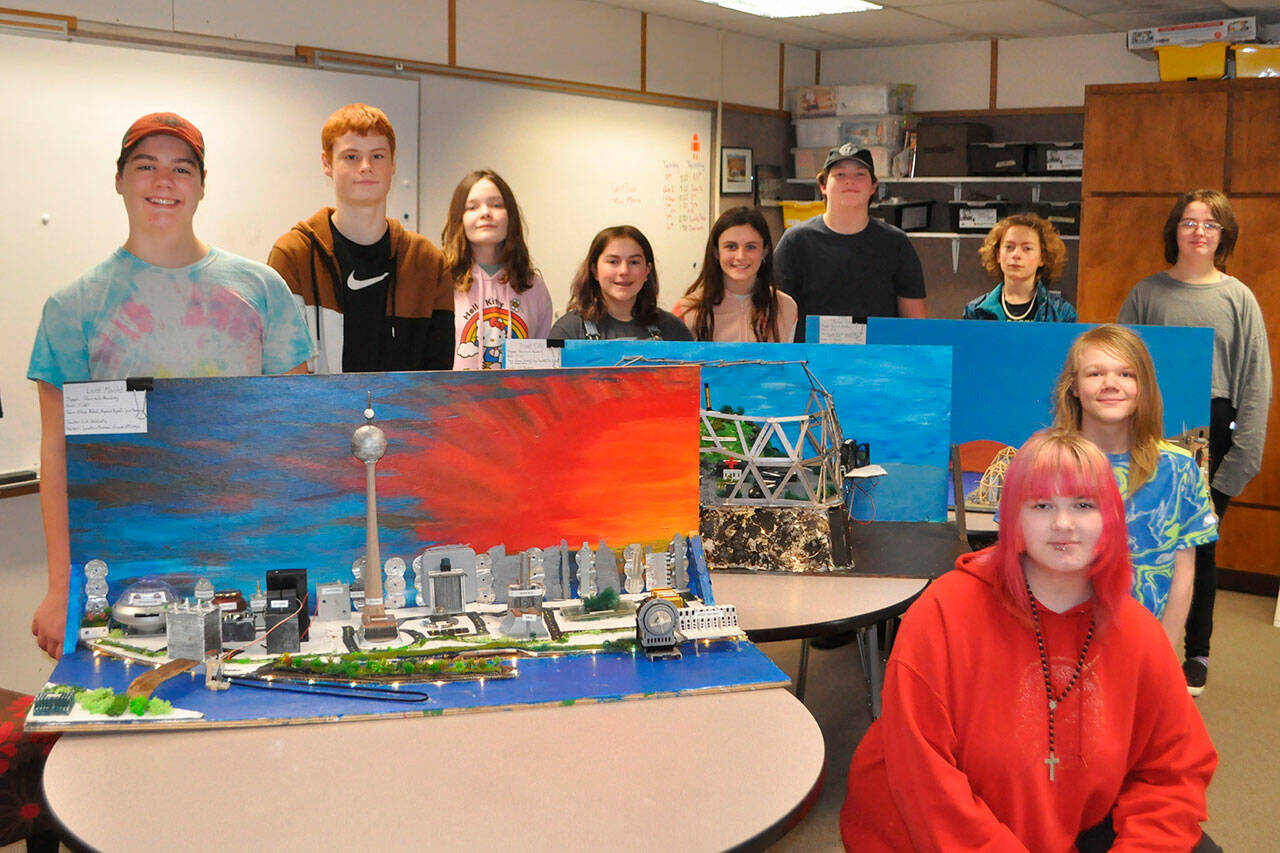Three teams from Olympic Peninsula Academy recently kept the school’s streak alive at an annual competition that encourages middle schoolers to build a better tomorrow.
About a dozen Sequim students in grades 6-8 presented their cities — Licht Macht, Ramaal Hara and Trout City — on Jan. 21 at the Future City Regional Competition at Shoreline Community College.
The STEM (Science, Technology, Engineering and Mathematics) competition features about 45,000 children competing around the globe each year, according to the Future City website.
Lilli Hardesty, an Olympic Peninsula Academy (OPA) instructional coach who has been leading the Sequim school’s class for 14 years, said they started participating in 2007, and OPA has the longest consecutive competition streak of any school in the region (Washington, Montana, Idaho and Alaska).
“It helps them be creative in a world with limitations,” Hardesty said. “They can also see who they want to become and better see the world around them.”
She’s seen multiple siblings come through the class, with one family having children in the class upwards of nine years in a row. At least five students have gone on to pursue engineering careers too, she said.
Students met Monday mornings from September-January in the enrichment STEM class with mentoring every three weeks from City of Port Angeles engineers Jonathan Boehme and Vincent McIntyre.
Students’ cities focused on the theme “Clean Renewable Energy: Electrifying the Future” with a portion of their scores at the competition based on an essay about their city, the 3-D model (with at least two moving parts), their presentation to judges, and a project plan.
Emma Abken, Jera Bessey, Marcus Byrne, Arvids Prorok and Leef Sisson took fifth place for Licht Macht that featured a moving boat and lights.
Bessey said she follows her brother Jorel’s lead into the class, who participated in previous years.
Because of classmates’ varying schedules, she and Byrne worked on the model after school and during winter break in class and each others’ homes. They were able to finish the day before the competition, she said.
Before the competition, Bessey said she enjoyed writing the essay that shared their vision for the city. At the competition, she liked meeting students from other schools and sharing what they learned and hoped to do with their city.
As an eighth-grader, it was Bessey’s final year to compete, but she said she feels it helped her discover a future in engineering as a career.
Emma Rhodes, a seventh-grader, echoed that sentiment, saying the class helped her see a career in engineering, too.
She was a Future City first-timer for “Trout City” with Sadie Canty, Gye Bradley and Roo Yates. It was an all-electric city using wind turbine power from Lake Superior, they said. Students said they used spray foam, old computer and electronic parts and more to make up their city that featured an observatory/telescope.
Rhodes said they learned about some of the pros and cons of certain environmental efforts, such as some of the difficulties in recycling solar panels.
For Ramaal Hara, which team members say translates to “hot sand” in Arabic, teammates Brayden Baritelle, Shay Lucier and Rivers Maynard, said they like how everything turned out for their city that sits in the sand by Cairo, Egypt.
Teammates highlighted that they found a lot of opportunities to use solar and wind power, with measures in place for any sand issues.
Maynard said they used a broken remote control car’s motor to become a fan, and Lucier said they used bamboo skewers for their geodesic domes.
They said much of their time was spent on the model’s base as they switched from spray foam to clay during construction.
The team agreed they’d like to participate in the class again next year, with Maynard saying there’s a lot of real world knowledge they have learned in the class that could be useful for high school.
Students shared their cities at the school’s Night of Excellence on Jan. 26. Hardesty said an OPA team’s second place finish at regionals in 2014 was their highest score so far.


